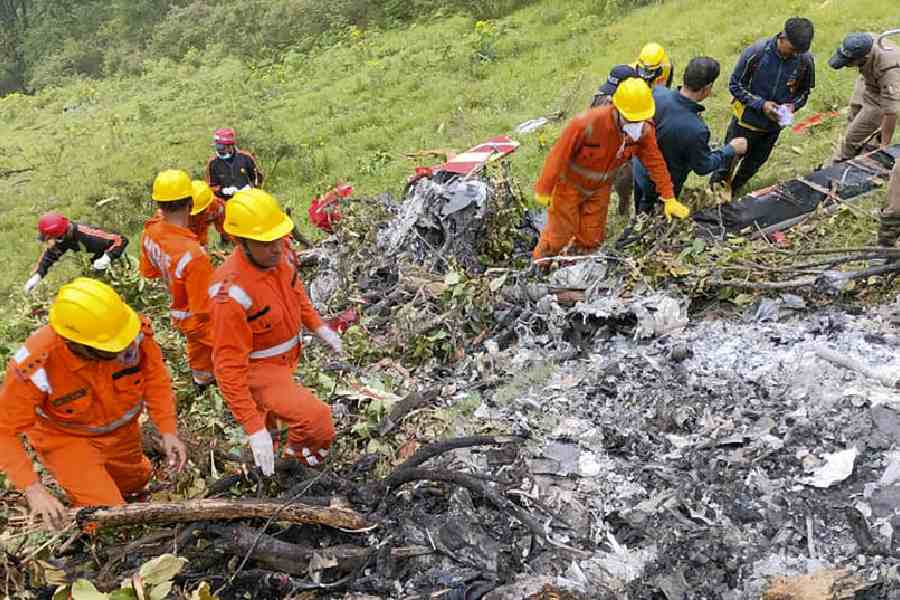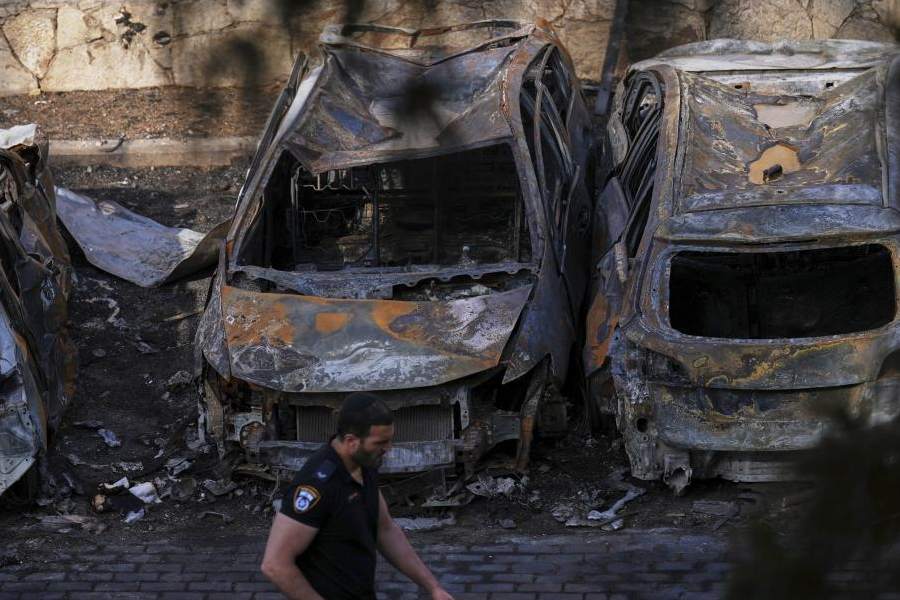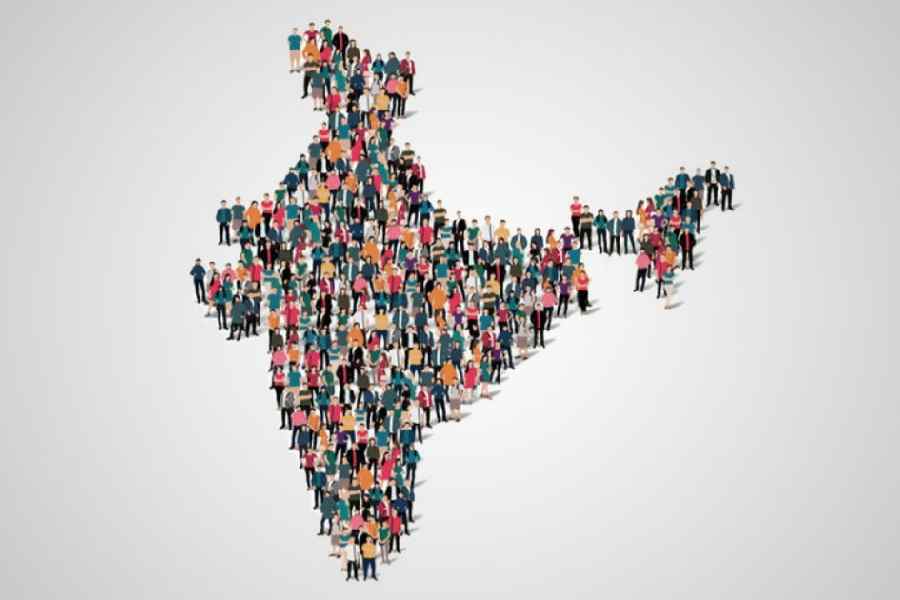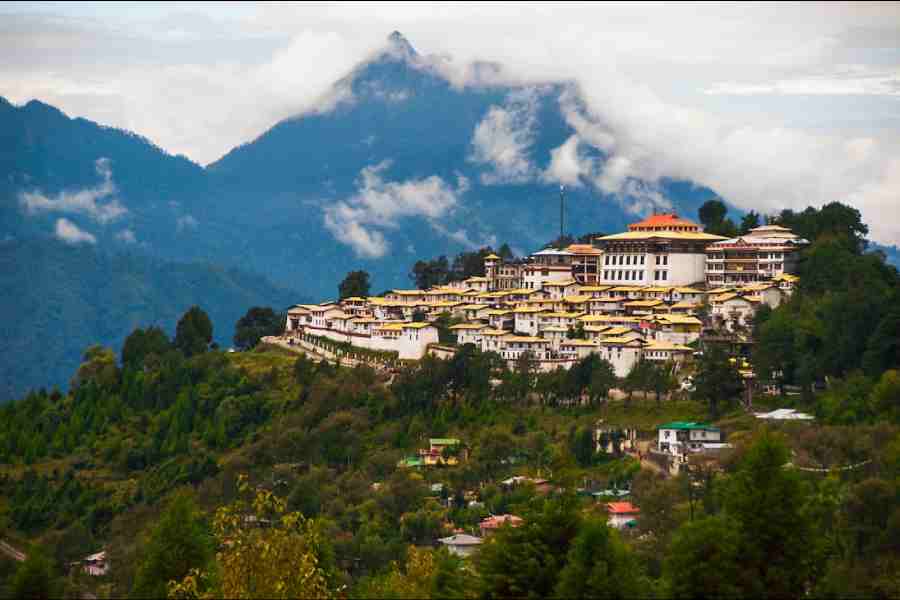
Picture Credit: AFP
Assam has an air of restiveness; tomorrow is the deadline for the publication of the complete draft of the National Register of Citizens (NRC). Various kinds of propaganda, some of it extremely sectarian, have contributed to this atmosphere. While some allegations against the process are not without ground, some others seem to be aiming at whipping up communal emotions.
The demand to update the NRC in Assam is not new. The NRC was published only once in 1951. The issue of its update assumed importance as the state witnessed large-scale illegal migration from erstwhile East Pakistan and, after 1971, from present-day Bangladesh. This led to the six-year-long Assam movement from 1979 to 1985, for deporting illegal migrants.
It is well acknowledged that large-scale migration to Assam since the mid-19th century transformed the state's demographic landscape. This has elicited anxious reactions from the Assamese leadership since the early 20th century. They raised this issue again at the time of Partition. And yet the Union government did not show the necessary concern.
The All Assam Students' Union (AASU) led the movement that demanded the updating of the NRC and the deportation of all illegal migrants who had entered Assam after 1951. The movement culminated in the signing of the Assam Accord in 1985. It set March 25, 1971, as the cut-off date for the deportation of illegal migrants. It bears mention that the cut-off date prescribed under articles 5 and 6 of the Constitution was July 19, 1949. To give force to the new date, an amendment was made to the Citizenship Act, 1955, and a new section was introduced. It was made applicable only to Assam.
The constitutionality of this section is now being examined by the Supreme Court. However, to compensate for the additional burden of foreigners that Assam had to share, the accord promised to provide constitutional safeguard to the Assamese people. The NRC update is viewed as part of that process.
Detection of foreigners in Assam was already made complicated by the Illegal Migrants (Determination by Tribunal) Act, legislated in 1983 by the Congress government. The Act had provisions that made it very difficult to identify the foreigners. It shifted the onus of proving citizenship on the accuser and not the accused, in a departure from the provisions of the Foreigners Act, 1946. This is why the state government led by the Asom Gana Parishad in 1985 could not make any headway in detecting illegal migrants.
Subsequently, the AASU challenged this Act in the Supreme Court, which struck it down as unconstitutional in 2005.
By then, generations of illegal migrants had also been born who became eligible for Indian citizenship according to the Citizenship Act, 1955. This Act, which guides the NRC, also makes it clear that every person born in India before July 1, 1987, shall be a citizen of India by birth. Further, any person born in India on or after that is also a citizen if either parent is a citizen of the country at the time of birth.
There had been intermittent demands from AASU and other organisations in Assam for updating the NRC. After years of dithering, the Centre decided to do it in 2005. But the process started and stalled after the controversial manner in which the pilot project was carried out by the Congress-led state government in 2009. Subsequently, Assam Public Works, an NGO, filed a petition at the Supreme Court.
In December 2014, a division bench of the apex court ordered that the NRC be updated in a time-bound manner. The updating began in 2015 and the first draft was published on December 31, 2017, which enlisted 1.9 crore out of 3.29 crore people of the state as legitimate citizens. The complete draft will be out tomorrow.
The update required people to prove citizenship by submitting one of 14 documents, called List-A documents, issued before the midnight of March 24, 1971, and wherein name of self or ancestor appears as in the 1951 NRC, electoral roll(s), land records, passport, bank/post office accounts, educational certificates, etc.
Two other documents, namely, a certificate issued by the circle officer or gaon panchayat secretary in respect of married women migrating after marriage, and the ration card could also be presented as supporting documents. These two documents would be accepted only if accompanied by one of the List-A documents.
Then there are List-B documents - land and bank documents, ration card, birth certificate - to be used to establish links with the List-A documents of an applicant's ancestors.
It is expected that the NRC update will be a big step in resolving the vexed foreigners' issue in Assam. But it has its detractors. Some indigenous organisations in Assam believe that the NRC will only regularise illegal migrants in Assam. They are also opposed to the use of 1971 as the cut-off year for expulsion of such immigrants and have moved the Supreme Court. They take umbrage to the fact that while a person entering the neighbouring states before 1971 is declared a foreigner, as soon as he or she enters Assam the person becomes Indian. Several religious and linguistic minority groups are also opposing the NRC as discriminatory and undemocratic.
One issue is of D-voters. The Election Commission has identified around 1.26 lakh "doubtful" or D-voters in Assam. On May 2, 2018, authorities notified that D-voters and their relatives are not to be included in the NRC. This was upheld by the Gauhati High Court. But there have been complaints that notices have been served to many genuine citizens.
It has also been pointed out that relatives of a declared foreigner might be born in India before July 1, 1987, the cut-off date for according Indian citizenship by birth. But such facts are allegedly being undermined by NRC officials.
Questions have also been raised about not admitting the gaon panchayat certificate as a link document despite the apex court's sanction. Detractors have expressed apprehension that the names of a large number of citizens might be missing from the NRC.
Certain sections are also engaged in a malicious propaganda about the NRC and its raison d'etre. Some Bengali-speaking groups - Hindus and Muslims - are protesting the verification of the NRC, alleging this is aimed at making millions of them illegal migrants.
The recent campaign on Avaaz.org, about seven million Muslims being deleted from the NRC, is extremely exaggerated and provocative. Such campaigns will not help break the citizenship stalemate in Assam and will rather create further complications.
On the other hand, some Bengali Hindu groups are vociferously supporting the Citizenship (Amendment) Bill, 2016, which will grant citizenship to all Hindus who have entered India on or before December 31, 2014.
Assamese and other indigenous groups are steadfast in their demand that all illegal migrants must be expelled, irrespective of religion. They are waging a massive protest against the Citizenship Bill, which the BJP-led Union government seeks to legislate into an Act with the objective of facilitating Indian citizenship for minority communities (mainly Hindus) in India's neighbouring Muslim-dominated countries. Clearly, the purpose of the NRC will be redundant if this Act comes into force.
Illegal Bangladeshi migration is a sensitive issue in Assam and successive Union governments have not shown any resolve to address this issue in right earnest. While the Congress's years of dilly-dallying has brought the issue to this pass, the BJP-led Union government's intention also does not inspire much confidence. What will happen to those who do not find their way to the NRC is a big question.
Authorities have emphasised that since the NRC published on July 30 is only a draft, those citizens whose names are missing therein, may apply again for inclusion in the final draft. They may further take a legal recourse, if necessary. Finally, there is presumably going to be a large number of people, Hindus and Muslims, who will not find their names in the NRC.
How will the state deal with this eventuality? Will they be stateless? Will they be put in detention centres? In the absence of any repatriation treaty between India and Bangladesh, previously arrested illegal migrants were "pushed back" to Bangladesh. This will be impossible now. The Centre has not even formally taken up the matter with Bangladesh till now.
One plausible suggestion to deal with the declared foreigners is to provide them work permit, as is the international practice. Some quarters are also suggesting distribution of this population among other Indian states. All these issues demand serious consideration.
Lost amidst the boisterous anti-NRC campaigns is the narrative of smaller indigenous communities of Assam, which have been crying for the protection of their political and cultural identities for decades. Hardly anybody, including India's progressive intelligentsia and the media, has spared a thought for them. Rather, a section has gone to the extent of demonising them as genocidal. This is unfortunate, to say the least.
The writer is a Professor of Sociology at Assam’s Tezpur University










